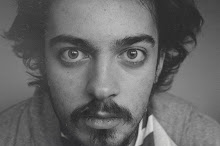Henry Moore-
I can't not include Henry Moore's work in my exhibition. His work is often very organic and abstract in nature. The standard procedure of displaying work in a specific gallery doesn't always apply with his practice and as a result his work can be found in rural and urban locations all around the world as public works of art.
A significant number of his sculptures are made out of bronze and stone and are commonly based on the human figure in some way. It is a common belief that the shape and structure of his figures in some way reflects the landscape of Castleford where he grew up as a boy.
Two Piece Reclining Figure 5, Bronze, 1963-64, Henry Moore.
It'll be great if I can include the work of Henry Moore into my virtual exhibition, I feel his work will gather a lot of interest from the visitors.
Babara Hepworth-
Born in 1903, Hepworth became one of the key sculptors in the 20th Century. Her work captures the essence of Modernism and is therefore not grounded in realism. Instead, in a similar fashion to Moore, her work is often extremely abstract and built for the purpose of being placed outside.
Family of Man, bronze, 1970, Barbara Hepworth.
Anish Kapoor-
Kapoor was born in Bomabay in 1954 and is best known for his large scale sculptures and installations. Kapoor tends to create large scale, often very vivid in colour, simplistic pieces. Shape and structure is often integral in his practice. A lot of his very earliest work was often made usingcoloured powder and wax. Later in his career he began using harder materials such as stone to make sculptures. Most recently he has been using stainless steel to create very large scale circular mirrors which reflect the sky and surroundings. Although he has work in galleries all over the world he also publically exhibits a significant amount of his work around the world.
Yellow, fibre glass and pigment, 1999, Anish Kapoor.
Andy Goldsworthy-
Brought up in Yorkshire Goldsworthy is best known for his land art and sculptures that are displayed in public spaces around the world. The Lake District and Yorkshire Dales are only two of the locations that play host to his work. He creates his work using materials he finds in the open air surroundings and tends to use these materials in the state he finds them. Due to the extremely organic nature of the materials he uses his work tends to be short living. Goldsworthy therefore normally records his work through photography.

Three Cones, Sandstone, 1991, Andy Goldsworthy.

No comments:
Post a Comment